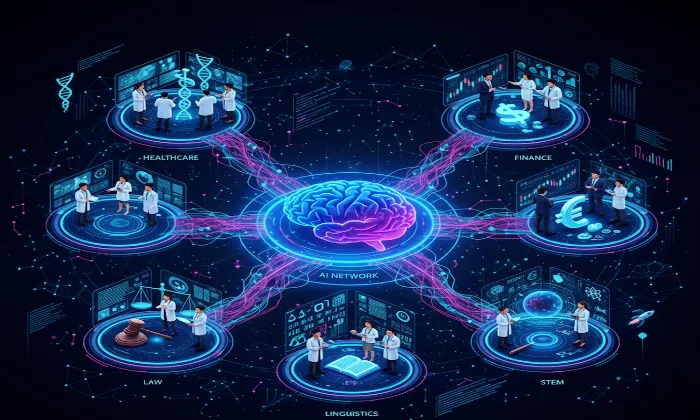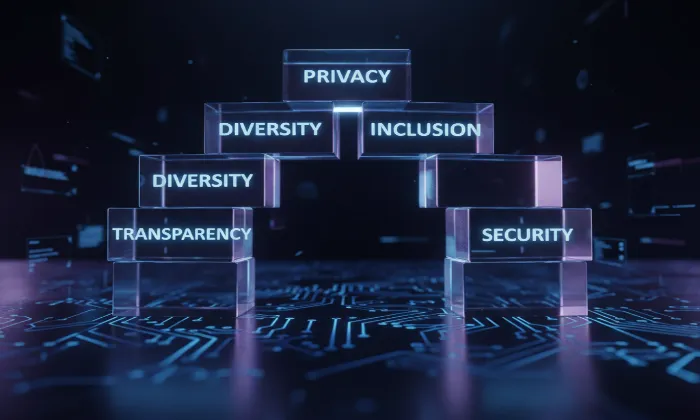How does in-person clinic data compare to telehealth conversation data?
Data Analysis
Healthcare
Telehealth
Understanding the nuances between in-person clinic data and telehealth conversation data is crucial for developing effective AI applications in healthcare. These two data types differ significantly in context, communication dynamics, and implications for AI training, impacting how healthcare AI systems perform.
Comparing In-Person and Telehealth Data: Key Differences
Contextual Factors
- In-Person Interactions: These occur in clinical settings, providing a rich backdrop of environmental sounds like medical equipment and patient chatter. Such context can enhance AI's ability to interpret audio data accurately, capturing the nuances of doctor-patient exchanges.
- Telehealth Conversations: Conducted remotely, these interactions can vary greatly depending on the patient's environment, which may include household noises. This variability can influence the clarity and context of the dialogue, challenging AI systems to adapt to less controlled acoustic conditions.
Communication Dynamics
- Nuanced Exchanges: In-person meetings allow doctors to leverage non-verbal cues like body language, aiding in empathy and understanding. These cues are critical for AI models focused on sentiment analysis or empathy detection.
- Verbal-Only Interactions: Telehealth relies solely on spoken communication, which can lead to potential misunderstandings. AI systems must be adept at interpreting verbal cues alone, emphasizing the need for robust NLP capabilities.
Implications for AI Training
- AI Model Performance: Training datasets that encompass both in-person and telehealth data enable AI systems to generalize across different consultation settings, thereby improving diagnostic and treatment accuracy. For instance, NLP models trained on diverse datasets can better handle variations in speech patterns and environmental noise.
- Diverse Training Data: A balanced dataset ensures AI systems are well-equipped to manage both the richness of in-person interactions and the variability of telehealth conversations. This diversity is critical for models designed for patient-provider interactions.
Real-World Applications and Use Cases
- Healthcare NLP Models: Systems trained on both data types can excel in applications like clinical summarization, intent detection, and empathy analysis. For example, a model that understands the subtleties of in-person cues and telehealth exchanges can provide more accurate transcriptions and insights.
- Sentiment Analysis Tools: These tools benefit from training on in-person data to capture emotional nuances and telehealth data to analyze tone and intent in verbal-only interactions.
Avoiding Pitfalls in Data Strategy: Balancing In-Person and Telehealth Data
- Comprehensive Approach: Teams should prioritize integrating both in-person and telehealth data to avoid performance gaps. Exclusive reliance on one data type can lead to models that fail to generalize across various healthcare scenarios.
- Ethical Data Usage: Telehealth data collection offers flexibility while respecting patient privacy, critical for ethical AI development. In contrast, in-person data requires stringent privacy measures to protect sensitive information.
By understanding and leveraging the unique characteristics of both in-person and telehealth data, AI engineers and product managers can create adaptable, efficient AI systems tailored to the evolving landscape of healthcare communication. For projects requiring extensive healthcare data, FutureBeeAI offers diverse training datasets that ensure your AI solutions are ready to meet global healthcare needs.
FAQs
Q. What are the main benefits of using both in-person and telehealth conversation data for AI training?
A. Utilizing both data types enables AI systems to capture the full spectrum of patient interactions, enhancing their ability to generalize across different consultation settings and improve diagnostic accuracy.
Q. How can FutureBeeAI assist in developing robust AI models with diverse datasets?
A. FutureBeeAI provides scalable, ethically collected datasets encompassing both in-person and telehealth interactions. Our expertise in data annotation and multilingual coverage ensures that AI models are well-prepared to handle diverse patient-provider communication scenarios.
What Else Do People Ask?
Related AI Articles
Browse Matching Datasets
Acquiring high-quality AI datasets has never been easier!!!
Get in touch with our AI data expert now!








